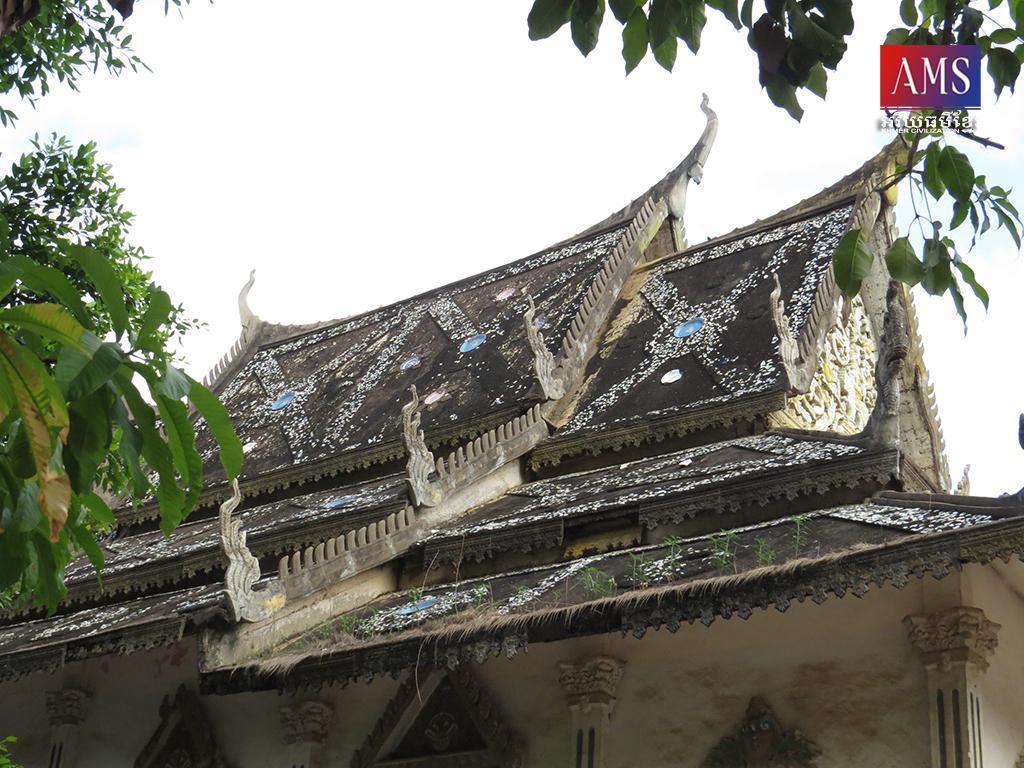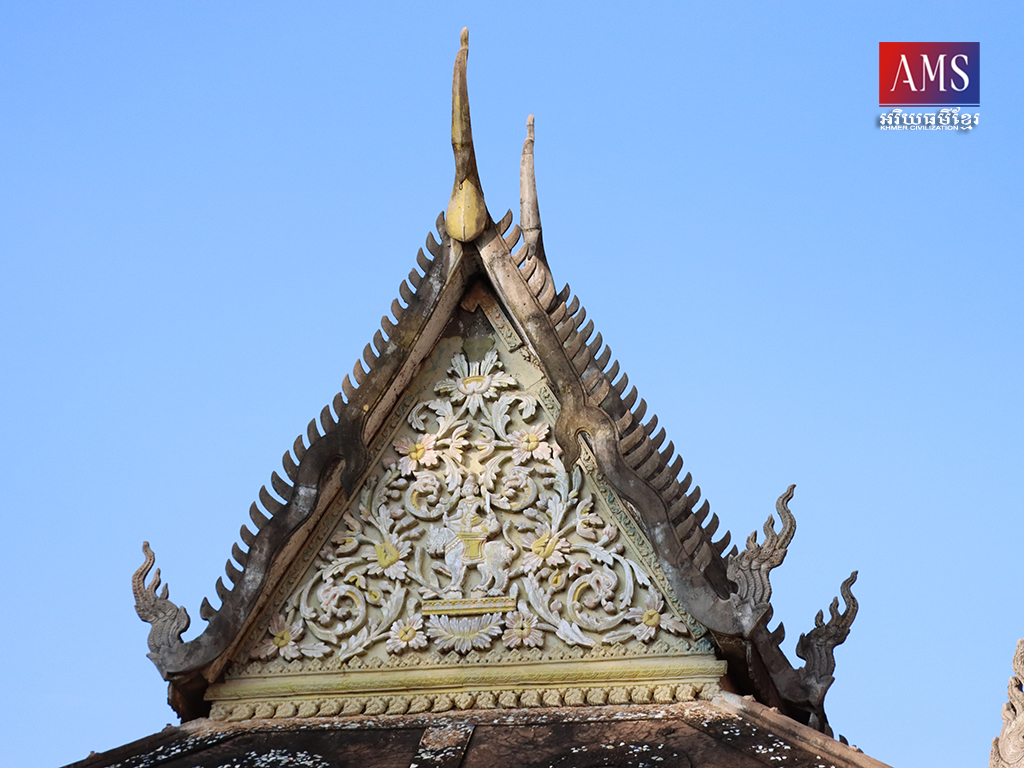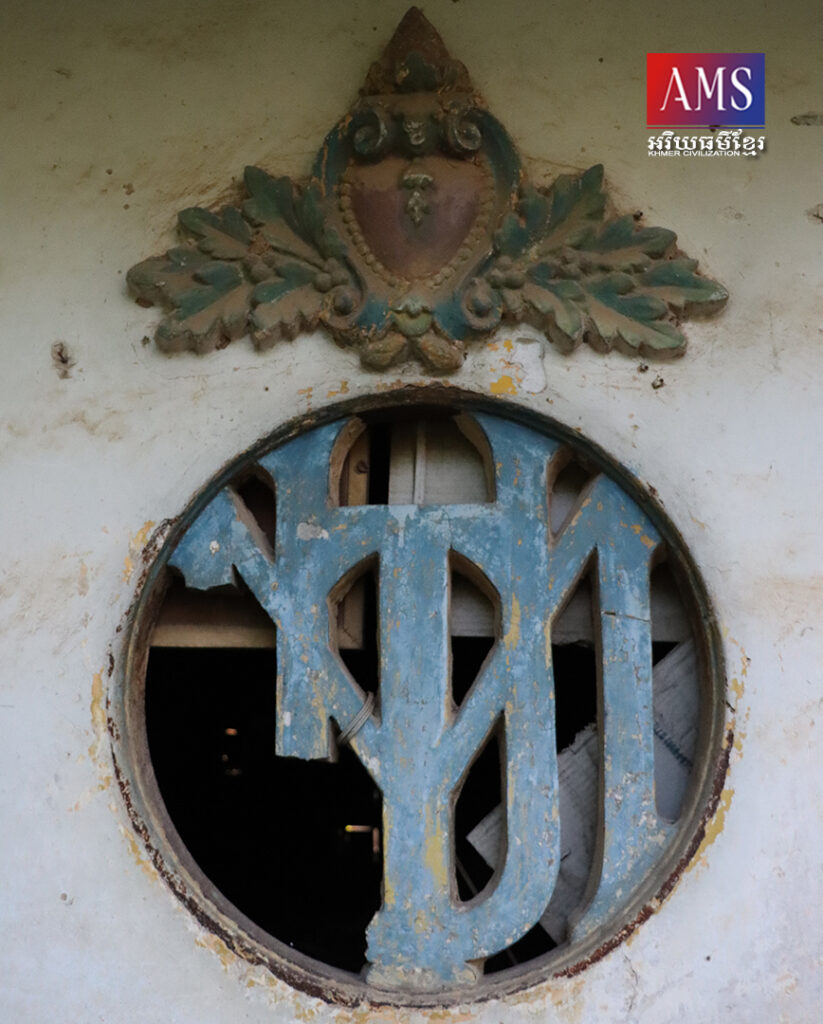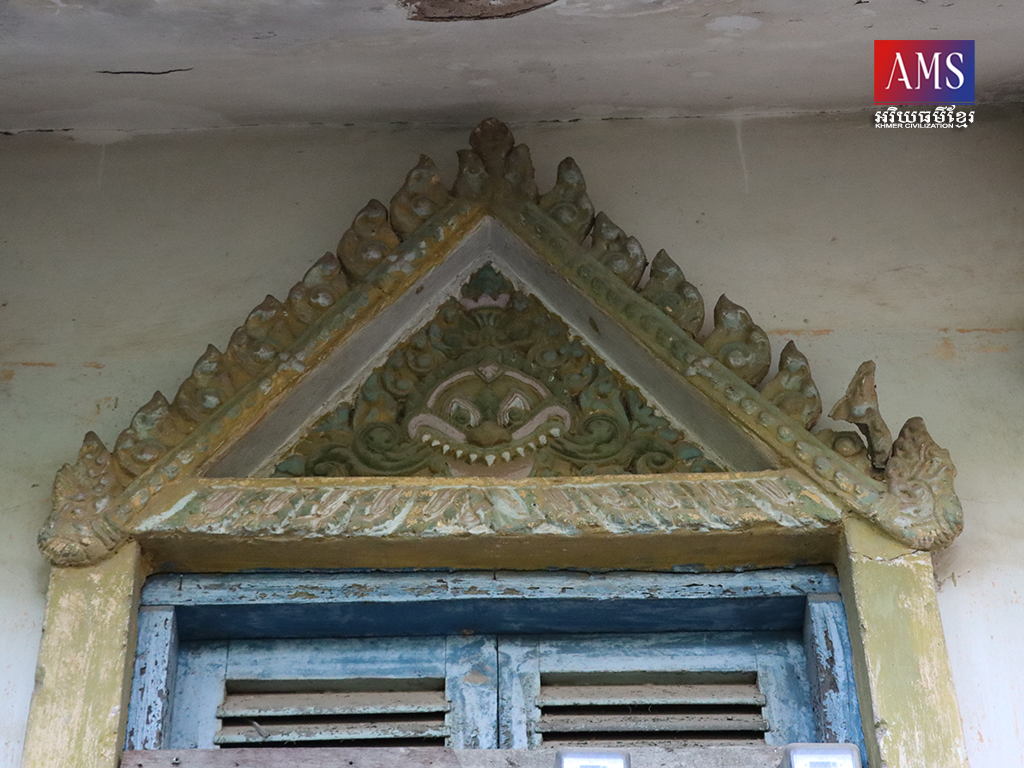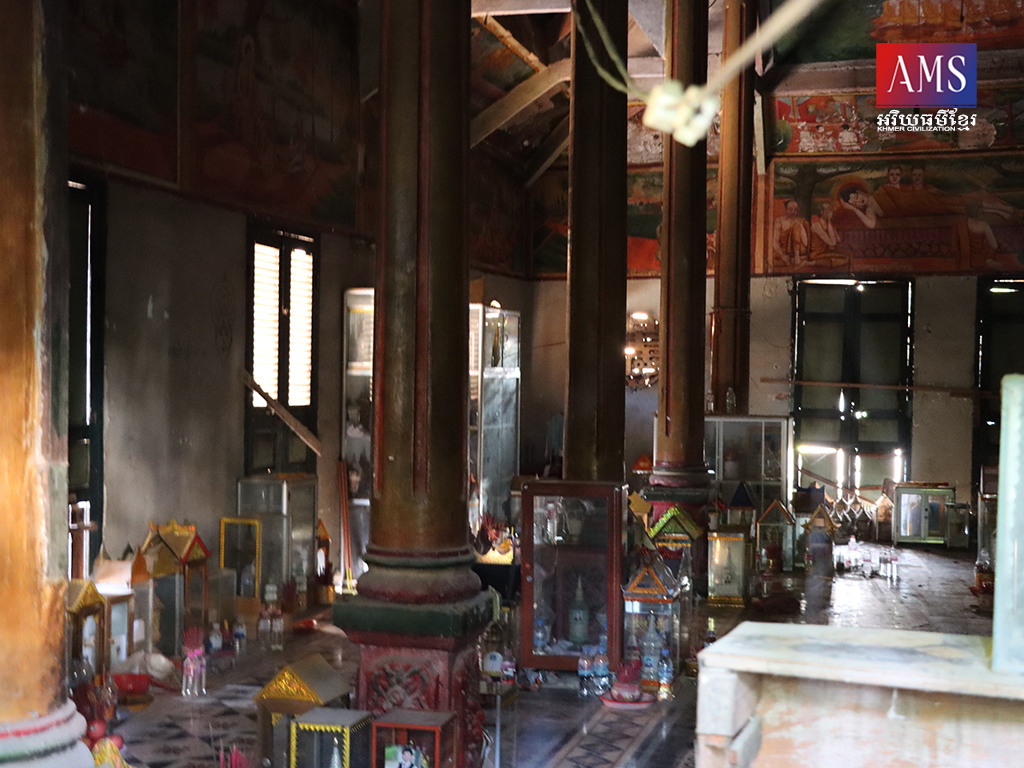វត្តទឹកថ្លា ស្ថិតក្នុងសង្កាត់ទឹកថ្លា ខណ្ឌសែនសុខ រាជធានីភ្នំពេញ តាំងនៅប្របមហាវិថីសហព័ន្ធរុស្ស៊ី។ ក្នុងបរិវេណវត្តនេះ មានសំណង់បុរាណតូចមួយសង់ឡើងអំពីបេតុង តុបតែងលម្អប្រកបដោយក្បាច់រចនាផ្សេងៗ និងមានអក្សរចារឹកនៅលើផ្នែកខ្លះនៃសំណង់គួរឱ្យចាប់អារម្មណ៍ក្រៃលែង។ ផ្អែកលើអក្សរចារឹកលើជញ្ជាំងផ្នែកខាងជើងដែលរចនាចេញជាលេខសកល១៩២៨(1928?) នាំឱ្យគេយល់ថា សំណង់នេះមានអាយុកាលជិត១០០ឆ្នាំហើយបើគិតមកដល់បច្ចុប្បន្ន។
អ្នកផងទូទៅ តែងហៅសំណង់ដែលមានអាយុកាលជិត១សតវត្សខាងលើនេះថា “វិហារ” ឬបន្ថែមពាក្យថា “វិហារបុរាណ” ឬ “វិហារកាត់ចិន” ផងក៏មាន។ ការហៅនេះទំនងផ្អែកលើលេខ១៩២៨ ក្នុងគំនិតយល់ថាជាឆ្នាំកសាងព្រះវិហារនោះ ដូចបានបញ្ជាក់មកខាងដើម និងអក្សរចារឹកជាភាសាចិនជាច្រើនកន្លែង ដែលគេរចនាក្នុងចន្លោះរង្វង់ធំៗលើជញ្ជាំង។ ប៉ុន្តែមានផ្នែកខ្លះទៀត សិល្បករបានរចនាលម្អដោយតួអក្សរឡាតាំងក្នុងចន្លោះរង្វង់ធំៗនោះដូចអក្សរចិនដែរ។ ទន្ទឹមនឹងនេះ បើតាមការសិក្សារបស់ Daniel Guéret និង Doninique-Pierre Guéret ក៏យល់ឃើញថាវិហារនេះសង់ឆ្នាំ១៩២៨ និង១៩៣០។ លើសពីនេះ បើយោងតាមសំណេរលើជញ្ជាំងផ្នែកខាងលិចបញ្ជាក់ថា នៅក្នុងឆ្នាំ១៩៩០ វិហារនេះធ្លាប់បានជួសជុល និងលាបពណ៌ម្តងទៀត។
យ៉ាងណាក៏ដោយ ប្រសិនកាត់យល់ដោយស្មាន សំណង់វិហារនេះទំហំប្រហែល១០ម៉ែត្រ គុណ១៥ ម៉ែត្រប៉ុណ្ណោះ។ ទន្ទឹមនឹងនេះ បើពិនិត្យលក្ខណៈទូទៅនៃស្ថាបត្យកម្ម ហាក់មានសណ្ឋានដូចវិហារជហ្វា៤ ដំបូលជ្រាលបីថ្នាក់។ នៅផ្នែកខាងចុងមេដំបូលមុខបំពាក់ដោយជហ្វា២ ផ្នែកខាងចុងមេដំបូលក្រោយបំពាក់ដោយជហ្វា២ ហើយតាមចែងនីមួយៗបំពាក់ដោយនាគដងក្តារ។ អ្វីដែលគួរឱ្យកត់សម្គាល់នៃការរចនាដំបូលវិហារខាងលើនេះ គឺដំបូលទាំងមូលជាសាច់បេតុងចាក់គ្របពីលើ ពោលគេពុំប្រើក្បឿងឡើយ ហើយផ្ទៃដំបូលទាំងមូលសោត សិល្បករបានច្នៃដាំលម្អដោយបំណែកអំបែងចាន និងថាសលោហៈរំលេចពណ៌ចម្រុះ។ ចំណែករងស្បូវ ជាប្រភេទក្បាច់ចាក់ពុម្ពស៊ីម៉ងត៍ក្នុងទម្រង់ជាក្បាច់កញ្ចាំង។ រីឯហោជាងទាំងពីរ (មុខ-ក្រោយ) គេឆ្លាក់ជារូបទេពគង់លើរាជសី ទ្រង់ព្រះខ័នក្នុងព្រះហស្តទាំងសងខាង ហើយព័ទ្ធដោយក្បាច់ភ្ញីទេសបំបែក។
ដោយឡែក វិហារនេះពុំសង់ឡើងនៅលើខឿនថ្នាក់ៗ និងពុំឃើញមានសេសសល់សន្លឹកសីមាដូចវិហារដទៃឡើយ។ ប៉ុន្តែគេបានសាងឡើងដោយលៃច្នៃឱ្យមានកន្លែងដើរប្រទក្សិណកម្ពស់ប្រហែលជាង១ម៉ែត្រ និងបង្កាន់ដៃដែកព័ទ្ធជុំវិញ។ នៅផ្នែកខាងមុខមានទ្វារពីរ ផ្នែកខាងក្រោយមានទ្វារពីរ ហើយលើជញ្ជាំងខាងជើងមានបង្អួចបួន និងលើជញ្ជាំងខាងត្បូងមានបង្អួចបួនដែរ។ រីឯក្បាលសសរ និងក្បាច់លម្អលើចន្លោះរង្វង់តាមជញ្ជាំងនីមួយៗ ហាក់មានលំនាំដូចសិល្បៈប៉ែកអឺរ៉ុប។ ចំពោះក្បាច់លម្អរាងត្រីកោណលើទ្វារ និងបង្អួចនីមួយៗទំនងបំពាក់លម្អក្នុងទសវត្សរ៍ទី៩០ ក្នុងពេលជួសជុលលាបពណ៌ឡើងវិញ។ នៅផ្នែកខាងក្នុង មានសសរបេតុងមូលចំនួន៨ដើម។ នៅលើផ្ទៃជញ្ជាំងត្រឹមលើបង្អួច និងផ្ទៃដំបូលមួយផ្នែកខាងក្នុង លម្អដោយគំនូររឿងពុទ្ធប្រវត្តិ។ តួអង្គក្នុងគំនូរខ្លះ ហាក់មានឥទ្ធិពលផ្នែកសម្លៀកបំពាក់ពីប៉ែកបស្ចិមប្រទេសខ្លះដែរ។ បច្ចុប្បន្នវិហារនេះត្រូវបានបិទទ្វារចោល ពុំបើកជាសារធារណៈឡើយ។ គេសង្កេតឃើញចន្លោះល្វែងខាងក្នុងវិហារ ត្រូវបានរៀបចំតម្កល់អដ្ឋិធាតុ និងគ្រឿងសក្ការៈចាស់ៗជាច្រើន។ ប៉ុន្តែទោះបីយ៉ាងណា បើធៀបនឹងវត្តផ្សេងទៀតក្នុងទីក្រុង វត្តនេះជាវត្តដែលមានសំណង់បុរាណមួយប្រកបដោយទឹកដៃសិល្បៈ និងក្បាច់រចនាតុបតែងលម្អចម្រុះគួរឱ្យចាប់អារម្មណ៍ ជាពិសេសគឺការនិយមយកបំណែកអំបែងចាន (សេរ៉ាមិច, Ceramic) មកបិទរំលេចលើផ្នែកសំខាន់ៗនៃសំណង់ ដូចលំនាំចេតិយបុរាណធំៗលើភ្នំព្រះរាជទ្រព្យ៕
———————————————————–
Ancient architecture in Wat Teuk Thla
Wat Teuk Thla is located in Sangkat Teuk Thla, Khan Sen Sok, Phnom Penh, located on the Boulevard of the Russian Federation. Inside the pagoda, there is a small ancient building made of concrete, decorated with various designs and inscriptions on some parts of the building is very interesting. Based on the inscription on the north wall, which is designed as a universal number 1928 (1928?), It is understood that the building is almost 100 years old as of today.
People often refer to the above-century-old buildings as “Vihear” or “Ancient Vihear” or “Chinese Vihear”. The call appears to have been based on the 1928 number, which was thought to be the year of the Vihear’s construction, as mentioned earlier, and in several Chinese letters designed on the walls. However, there are other parts that the artist has decorated with Latin characters. Meanwhile, according to studies by Daniel Guéret and Doninique-Pierre Guéret, this Vihear was built in 1928 and 1930. In addition, according to inscriptions on the west wall, in 1990 the Vihear was renovated and painted again.
However, the Vihear is about 10 meters by 15 meters. In addition, if you look at the overviews of the architecture, it seems to look like a Vihear has four Chveas with a three-tiered roof. What is remarkable about the design of the Vihear roof above is the whole roof is covered with concrete, that is, no tiles are used, and the entire roof surface is decorated by the artist’s innovation with pieces of ceramics and metal trays highlight the colors. As for the two pediments (front and back), they are carved with the image of a deity sitting on the lion, holding the Khmer sword in both hands and surrounded by decorative Kbach Khmer Phñi Tes.
In particular, this Vihear is not built on tiered-foundation and does not see the Buddhist ritual boundary (Sīmā) like other Vihears. However, it was built with the design of a Bratoksaen (ritual circle walk) about 1 meter high and surrounded by steel railings. There were two doors on the front, two on the back, and four windows on the north wall, and four on the south wall. As to the head of the column and the ornaments on the between of each wall seem to be the European art style. Inside there are eight-round concrete columns. The parts of walls and roofs are decorated with paintings of Buddhist stories. Some of the characters in the paintings seem to have influenced some Western costumes. The Vihear is currently closed and not open to the public. It is observed that the space inside the Vihear is decorated with many ancient relics and old items worship. However, compared to other pagodas in the city, this pagoda is one of an ancient structure with decorative designs that are interesting, especially the use of pieces of ceramic to highlight on important parts of the building like the pattern of large ancient stupas on Phnom Preah Reach Trop.
អត្ថបទដើម៖ ហៀន សុវណ្ណមរកត



